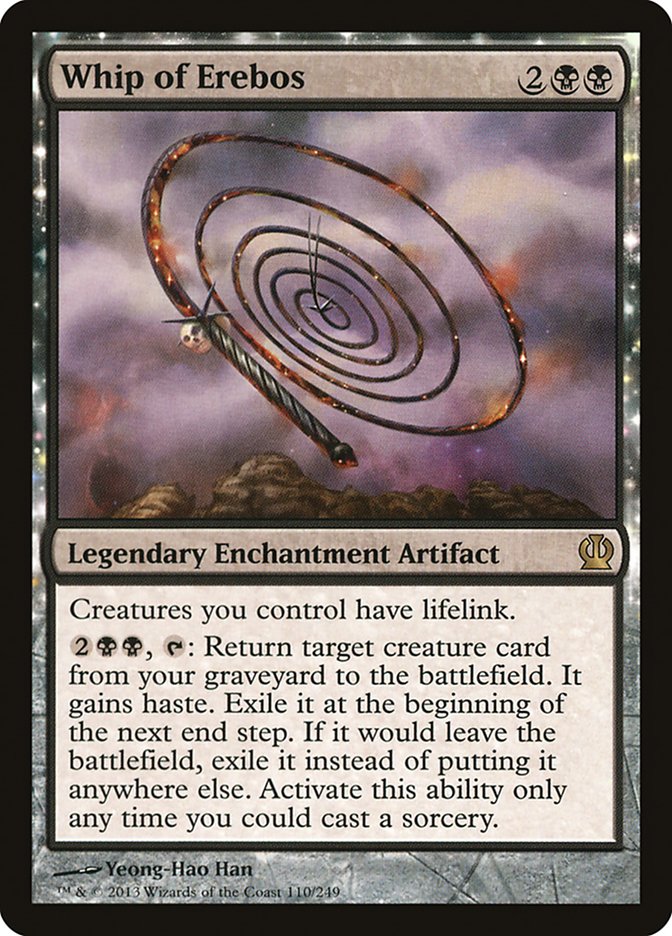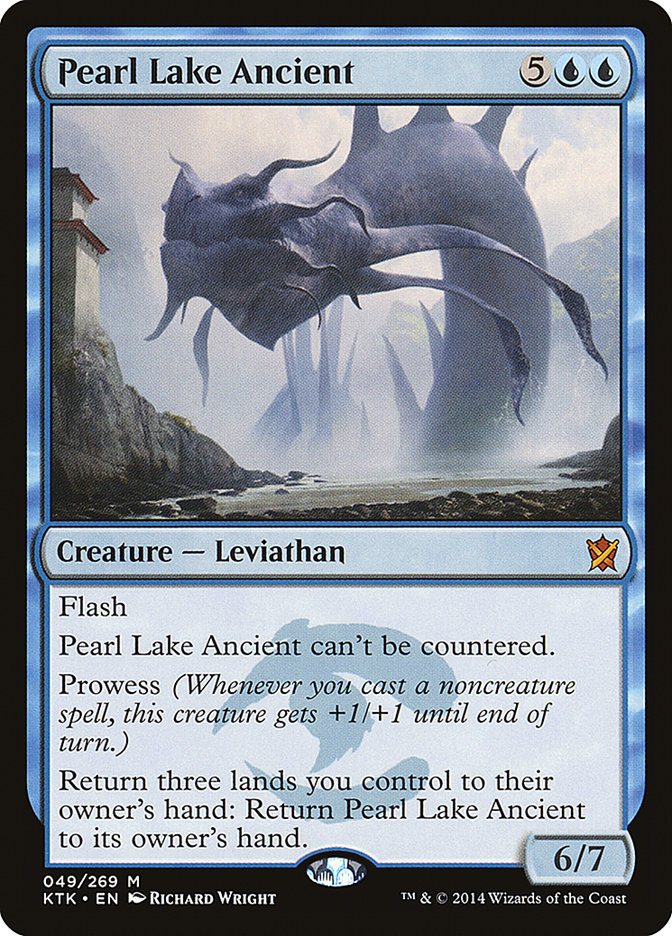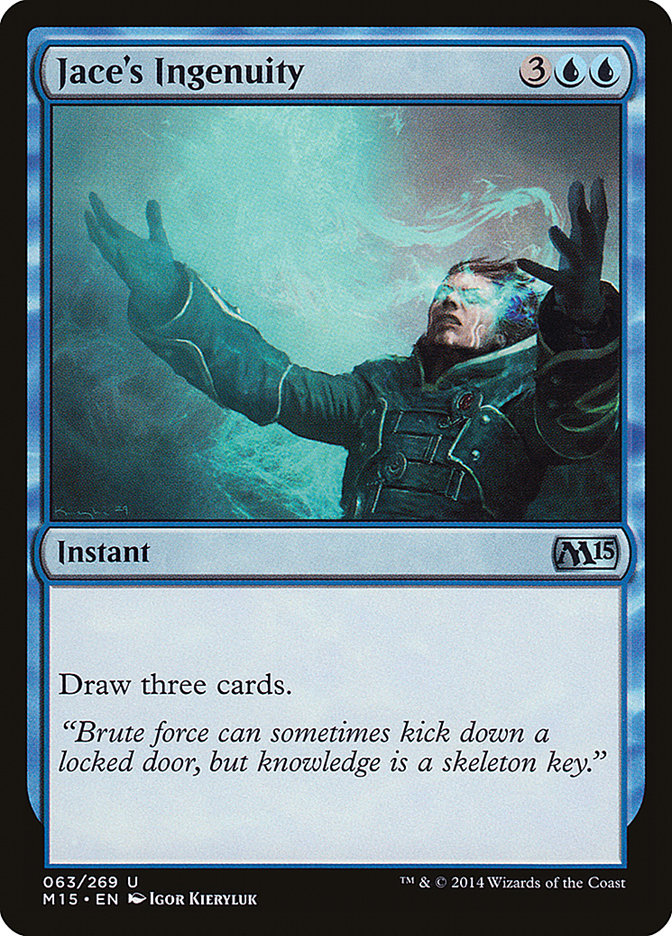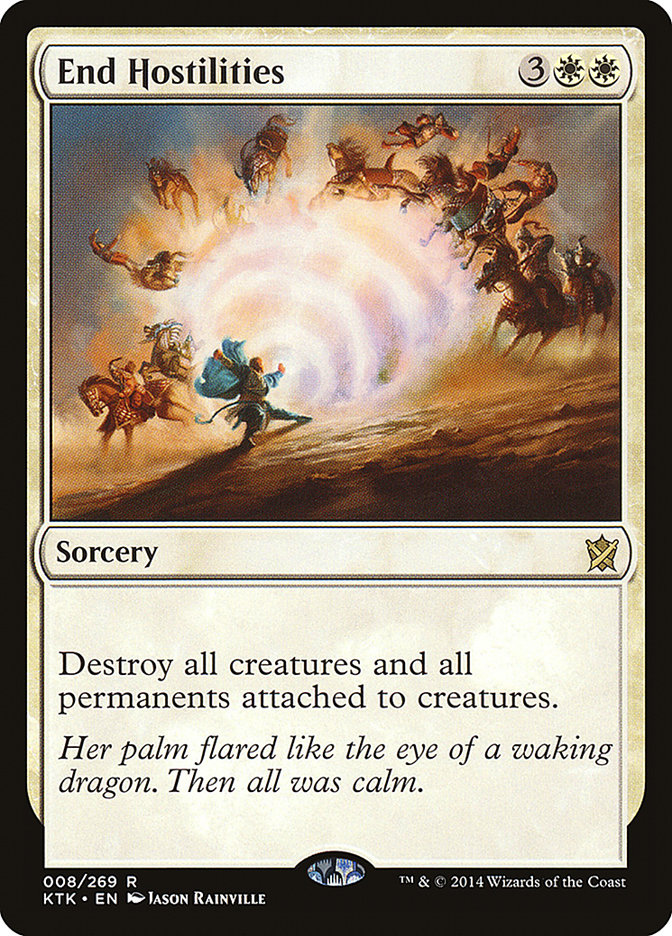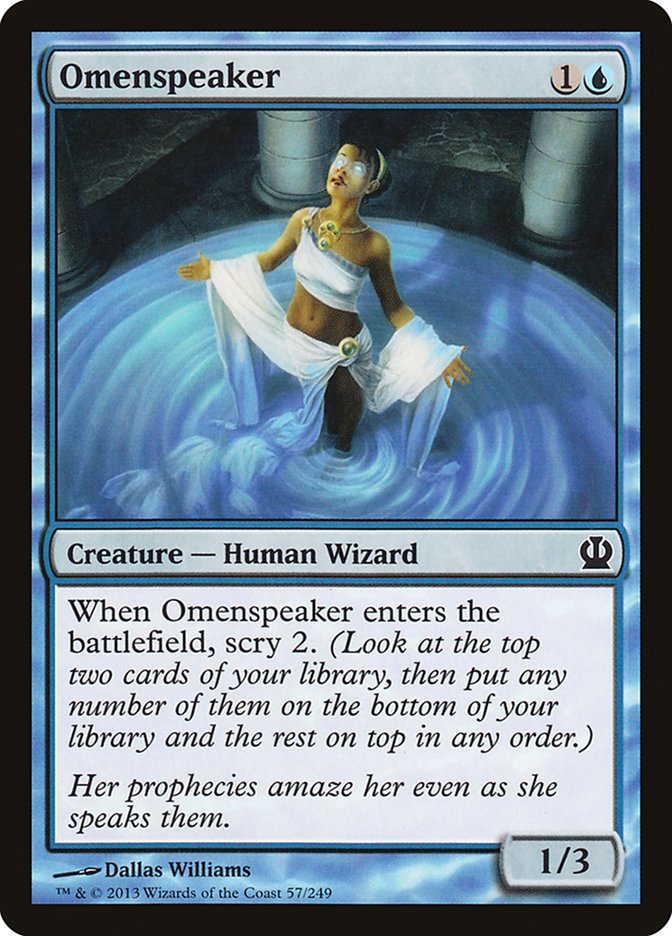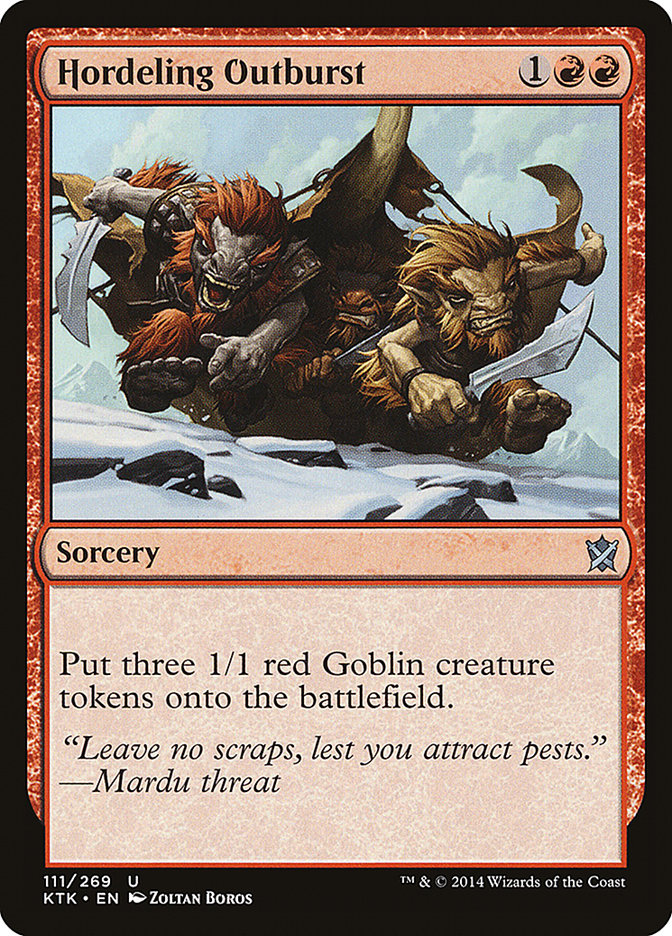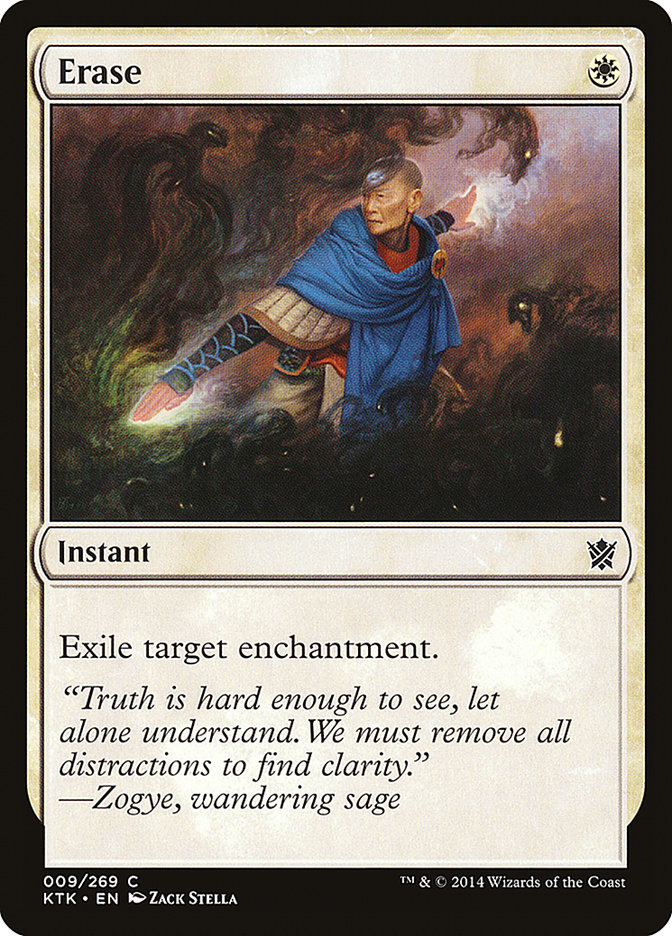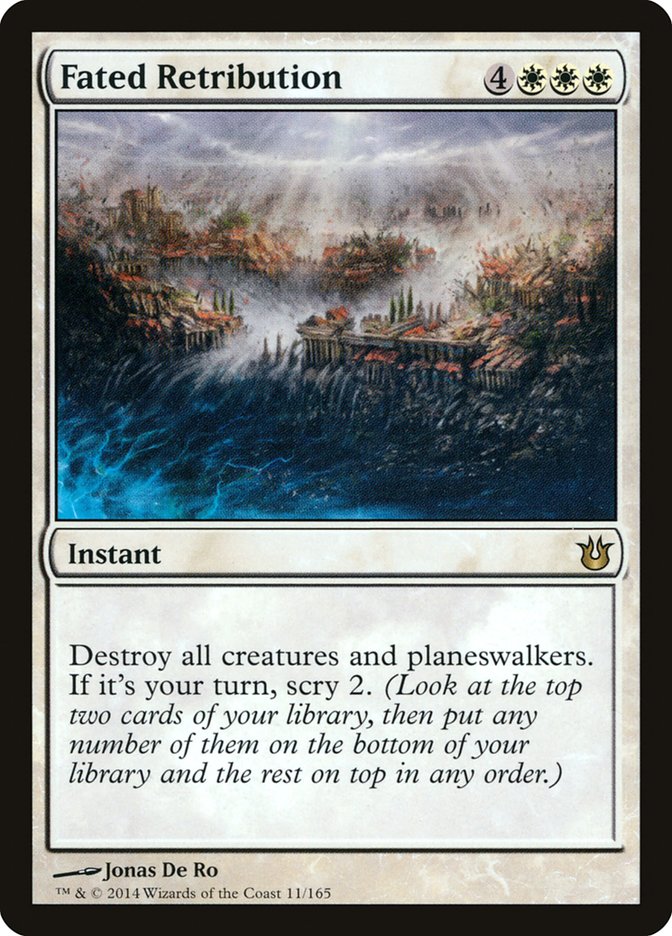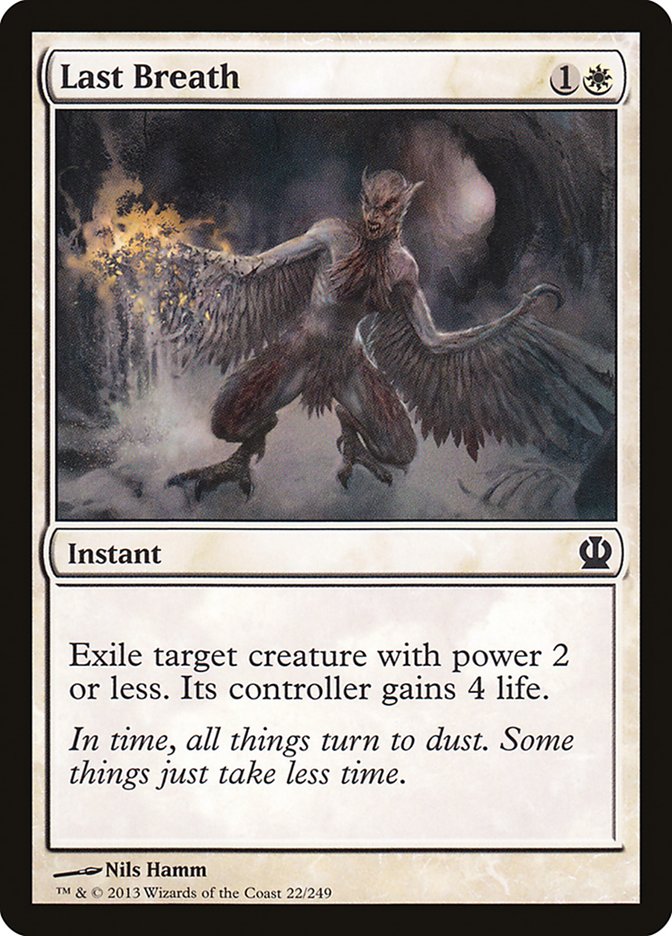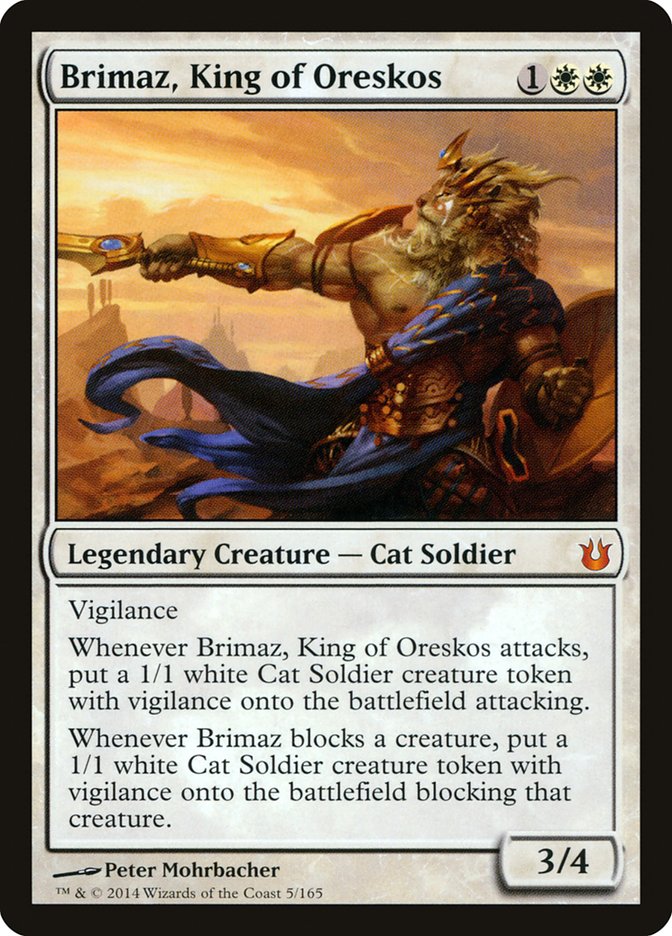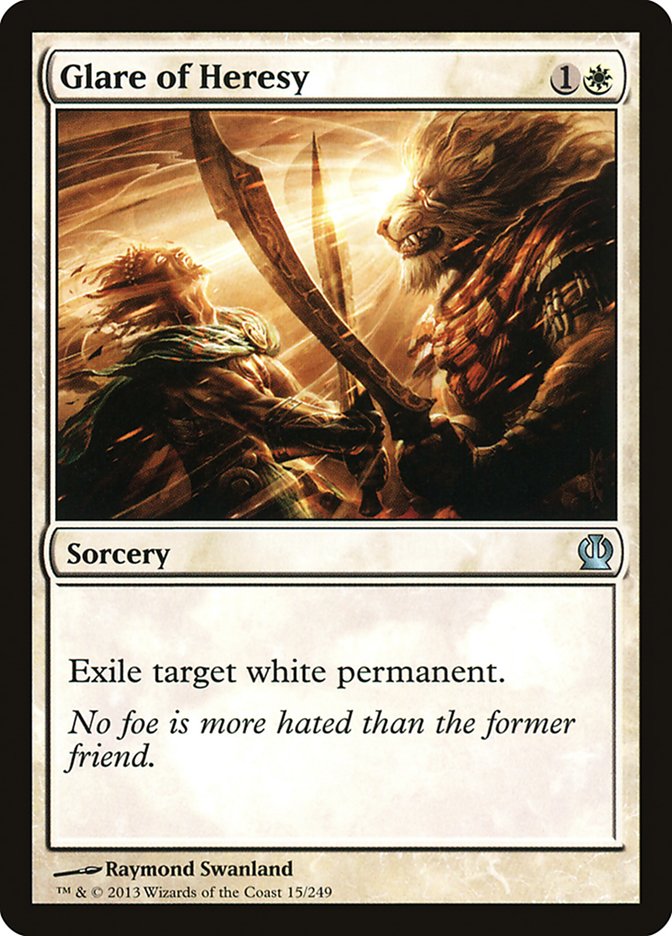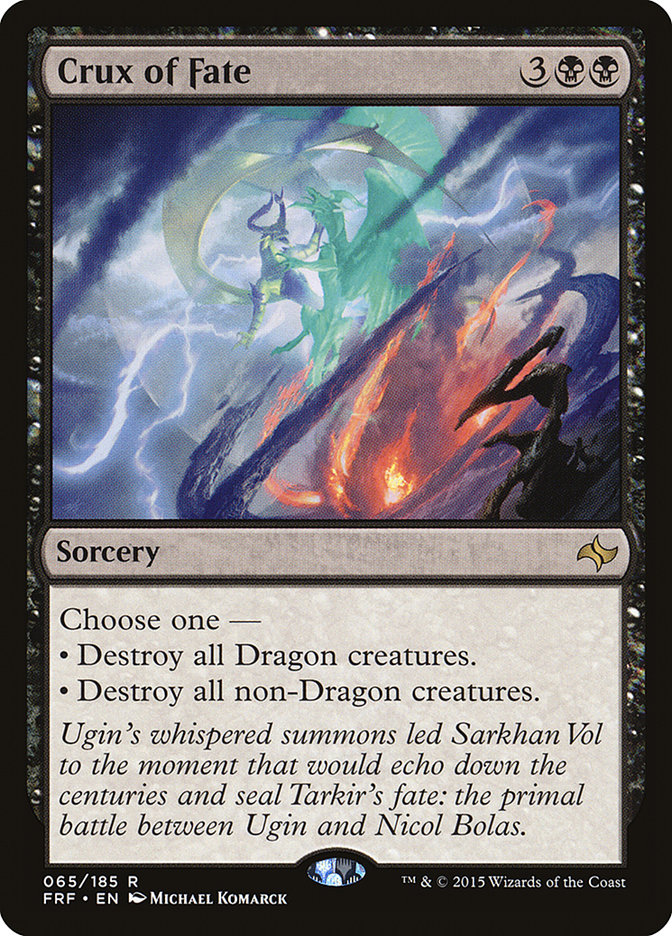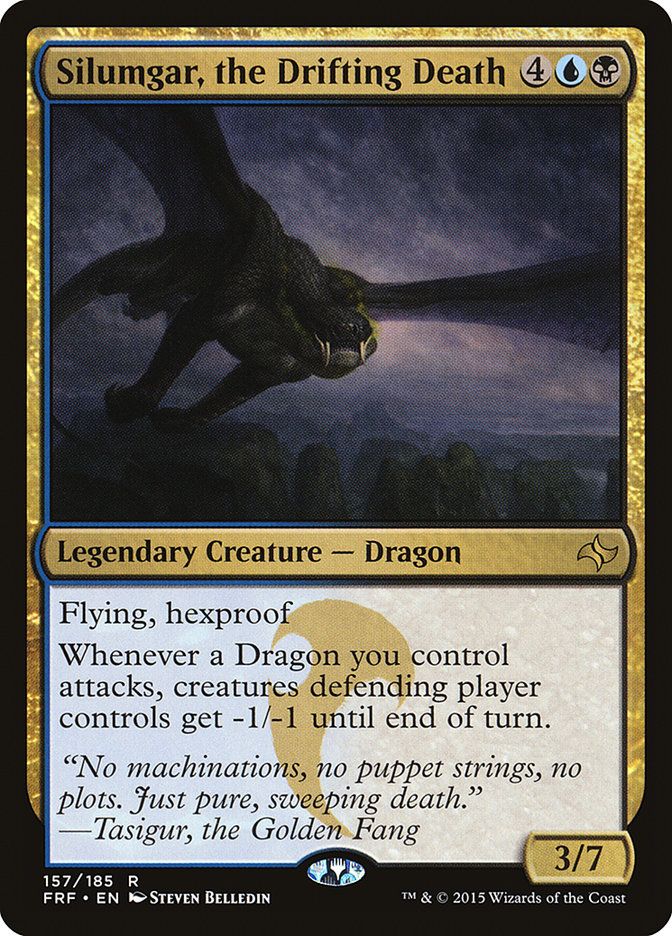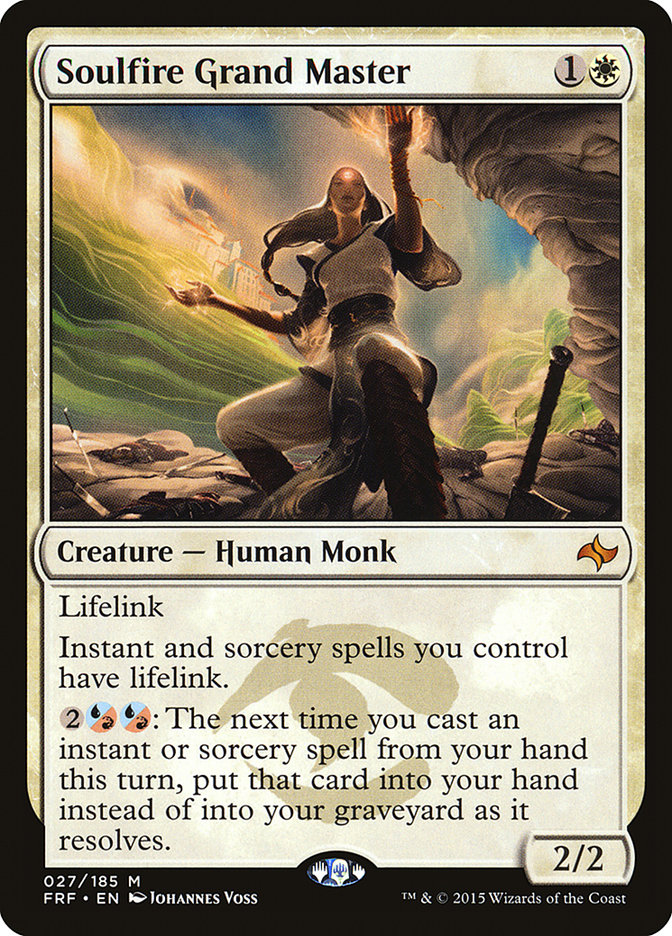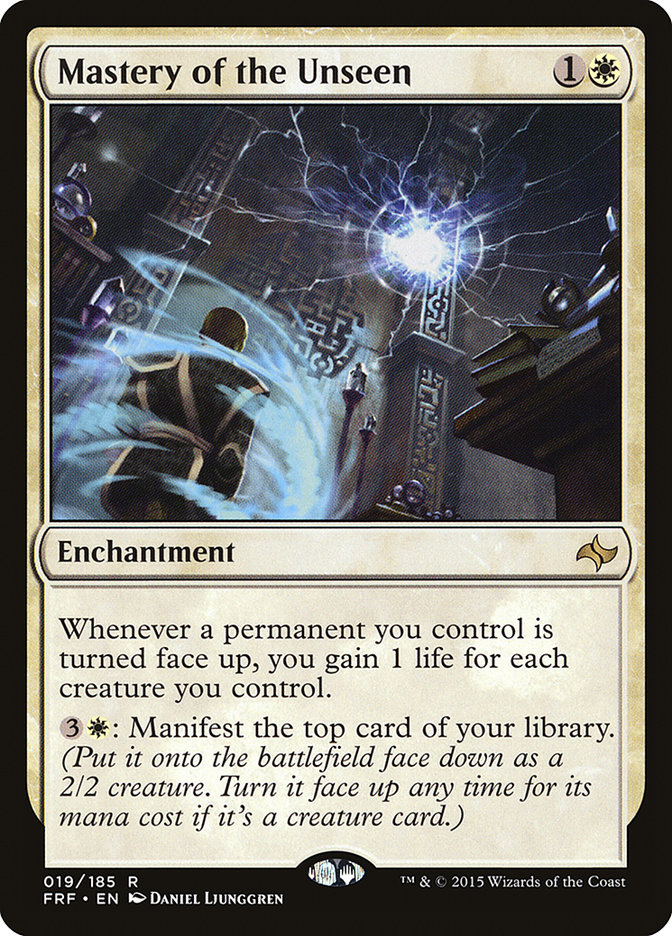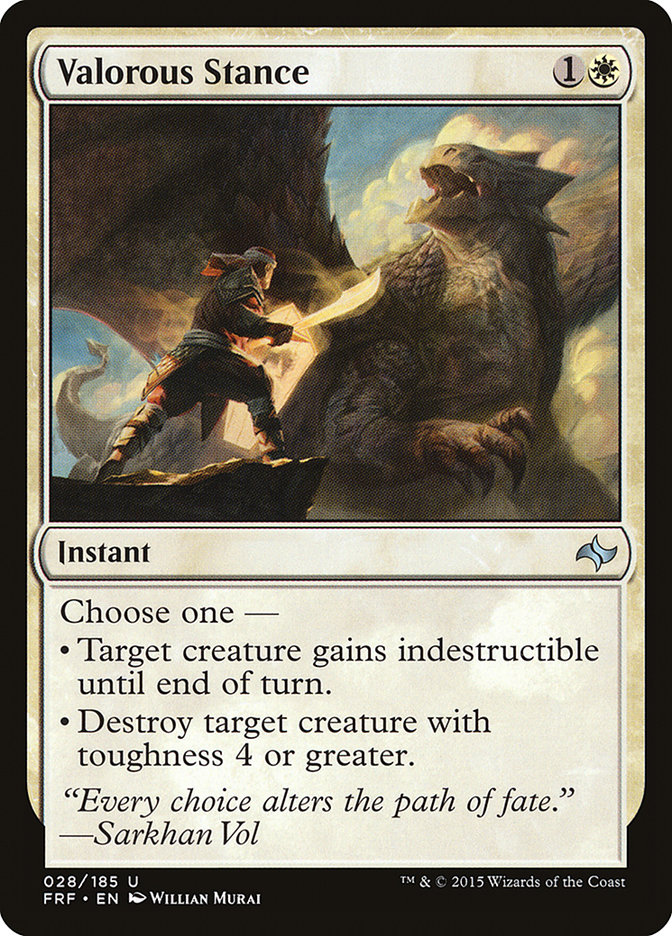Sometimes haters just gonna hate (hate hate hate hate). People have been telling me to “play a real deck” for a while now, but I’ve been perfectly happy
with the lack of respect for U/W Control. It means nobody plays my deck, and therefore, nobody is putting any thought into having to beat it.
It’s honestly a lot like Goblins was back in the day. Nobody gave the deck any respect, and the deck was extremely well-positioned against all of the top
decks in the format. Goblins would crush any non-combo Brainstorm deck, and it was a favorite in almost any non-combo match – that is assuming you knew how
to handle the deck properly and how to approach your matchups.
U/W Control is right in the same boat. Much like Goblins, U/W Control is not easy to play at all. There are a ton of decision trees, and they often go
extremely deep- to the point where a minor mistake made on turn 5 can easily end up losing the you the game many turns later on turn 15. The key difference
between Goblins and U/W Control is that sometimes Goblins would get free, easy wins off of fast Goblin Lackey/Wasteland draws, and U/W Control does not
have this luxury.
This is probably the most likely reason the deck hasn’t caught on: nothing comes easy for the U/W Control player. Unlike U/W Control decks in the last
format, there is no Sphinx’s Revelation to just blow people away with. You must carefully nickel and dime your way all the way through to the lategame,
where you eventually put them away.
So why go through all the trouble? Why play U/W Control?
Aside from personal the preference of wanting to play a deck that gives you many options in each game, there is a huge factor for playing the deck:
Excellent Matchups
Right now, many people would define Standard with two words:
“It’s a Siege Rhino’s world, and we’re just living in it” is a common mantra, and the 4/5’s presence as a menace in Standard is not to be overstated. Much
of the format has warped around Siege Rhino, and the heart of Standard is hellbent right now on trying to out-midrage one of the best midrange cards ever
printed with Whip of Erebos, Hornet Queen, and so on.
U/W Control crushes Siege Rhino midrange decks.
Cards like Nullify, Dissolve, and Disdainful Stroke are amazing against all sorts of four- and five-mana spells, as you not only gain a mana and tempo
advantage but also the mobility of being able to act on your opponent’s turn. A few solid one-for-one trades backed up by some card draw spells is more
than enough to put away most midrange decks, as they can’t hope to keep up with your card advantage and can’t kill you quick enough as you set up.
The best part about this midrange arms race is that people just keep making their decks worse and worse against us! A deck like Chris Anderson’s 4-Color
Soul of Theros deck is constructed very carefully to be excellent against other Siege Rhino decks, but as a result, is even worse against us.
Abzan Aggro, Abzan Midrange, Abzan Reanimator, Sultai Reanimator, Four-Color Delve, G/B Devotion, and pretty much any Sylvan Caryatid deck are excellent
matchups for us with careful play.
W/U Heroic I’m a bit confused about, as I had thought it was a good matchup, but I am 0-3 in my last three matches against it. Of course, those matches
were against Tom Ross, Stephen Mann, and Joe Lossett, so I’m sure the quality of the pilots had something to do with them. We gain a lot from our
sideboard, but they do as well; more testing is needed here.
Jeskai Tokens is the other major deck in the format, and it can be a little difficult game 1 if your cards end up not matching up well against theirs. If
we have a Nullify/Banishing Light/Last Breath kind of hand, and they open up on Raise the Alarm into Hordeling Outburst, things can be rough. If they open
up on Seeker of the Way into Goblin Rabblemaster, then it’s not really a big deal. After sideboard we gain many excellent tools against them, which evens
out the matchup. It is also good that Jeskai Tokens often struggles with Siege Rhino decks and their Whips and Doomwake Giants.
The Deck
Creatures (1)
Planeswalkers (3)
Lands (27)
Spells (29)
- 2 Last Breath
- 1 Devouring Light
- 1 Negate
- 2 Divination
- 3 Jace's Ingenuity
- 4 Dissolve
- 3 Nullify
- 4 Banishing Light
- 3 End Hostilities
- 3 Disdainful Stroke
- 3 Dig Through Time
Sideboard

The deck honestly hasn’t changed much over the last two months, but there are a few important things to mention.
I’ve wanted to cut Pearl Lake Ancient for a while, but was genuinely afraid of running out of actual win conditions. Black decks are often jam packed with
Thoughtseizes and useless Hero’s Downfalls game 1, and it’s not inconceivable that they could simply Thoughtseize or Downfall all of your Elspeths. I
pulled the trigger for one IQ and almost lost an unlosable game because of this, and I didn’t like how it changed the way I would play my Elspeths.
Pearl Lake Ancient isn’t amazing, but it does its job. In any scenario where you play a mirror against either U/W or U/B Control, simply having one Pearl
Lake Ancient in your deck likely improves your game 1 winning percentage by about 20%.
Jace’s Ingenuity is one of my favorite cards in the deck. Resolving an end of turn Jace’s Ingenuity feels almost as good as an end of turn Sphinx’s
Revelation, in that once you resolve it and untap, it feels like you can no longer lose. Of course it’s much worse than Revelation, but the effect is still
exactly what this deck wants. The 3-3 split of Ingenuity and Dig Through Time is perfect, as this deck doesn’t blast through cards fast enough for the full
four delve spells.
A maindeck Negate is a testament to how good the two-mana counterspells actually are. There are a lot of excellent non-creature spells in the format,
mostly out of your bad matchups, and Negate does an excellent job of cleaning them up cheaply. Any spell out of heroic, any token maker or Ascendancy out
of Jeskai Tokens, or even just a Whip of Erebos or Thoughtseize out of the midrange decks. I would even consider going up to two maindeck.
End Hostilities isn’t really that good. It seems like having a Wrath of God is the big difference between U/B and U/W Control, but that’s really only part
of the equation. End Hostilities is definitely a necessity and a defining card in the deck, but it’s more of a necessity than anything else. We don’t
really want to just jam it on turn 5, as there are many cards our opponent can follow up with to punish us. We would much rather cast it on turn 7 with
Disdainful Stroke or Nullify backup. This is why there is only three and why I often end up boarding a few out – even in creature matchups.
Evolving Wilds ain’t pretty, but it does what it needs to. We need a bit more help to make our Dig Through Times reasonable, and we need to make sure we
have UU on turn 2 for Nullify and WW on turn 3 for Brimaz out of the board. Evolving Wilds does these things, and there are holes in the curve where the
tapped land isn’t too big of a deal.
The Sideboard
This is where I’ve gotten the most questions, so let’s go through each card.
Ahh yes… Omenspeaker. No, Omenspeaker is not a very good Magic card, but like most of the cards in the deck, it serves it’s purpose and serves it well.
What is that purpose?
To block 1/1 tokens; it’s as simple as that. Omenspeaker is the best one or two mana creature that can block 1/1 tokens and live while also doing something
else relevant.
Comes in against: Jeskai Tokens, other Hordeling Outburst decks, other control decks
Erase kills enchantments. Board it in against decks that have enchantments.
Comes in against: any Whip of Erebos or constellation deck, board one to hedge against Jeskai Tokens or Heroic.
Fated Retribution is your concession to one card: Nissa, Worldwaker. Nissa is very good against us, and Fated Retribution is the perfect answer. In a deck
with so much card draw and Dig Through Times, a high impact one-of is just what the doctor ordered. Planeswalkers are often what people bring in against us
to try and beat our End Hostilities, and Fated Retribution is our excellent answer.
Comes in against: the mirror, any deck that might have Nissa, midrange decks with planeswalker suites.
An extra Last Breath against Goblin Rabblemaster decks and any random aggressive decks.
Comes in against: Jeskai Tokens, R/W Aggro, Mono-Red, W/U Heroic.
Negate is one of the best cards in the sideboard, as we talked about in the maindeck section. There are many cards that Nullify and Disdainful Stroke can’t
hit, and Negate fills that void perfectly. Hordeling Outburst, Thoughtseize, planeswalkers, Ordeal of Thassa, and so on, all answered for two mana.
Comes in against: Jeskai Tokens, W/U Heroic, any mirror, any Abzan deck that is going to be boarding in more spells
Make way for the king! Brimaz is my most asked about sideboard card and my most often used. He’s kind of a sideboard jig, as people are very likely to
board out their removal spells, and he is quite good unopposed.
The main reason for him is for Goblin Rabblemaster/Hordeling Outburst decks. Like Omenspeaker, he does a great job blocking tokens while also being able to
attack and make more blockers. He is also excellent against W/U Heroic, as he provides you a quick way to pressure them, and they don’t block very well.
They usually have only one very large attacker, and if they attack you, Brimaz can just attack them back and create a chump blocker. If they stay back on
defense… awesome! You’ve made the aggressive deck stay back on defense. Brimaz is a house against all these decks, and while the Rabblemaster decks will
have Stoke the Flames still, it is well worth the games they don’t have it.
Brimaz also gives you an excellent and cheap angle of attack in the mirror that is unexpected and can be cast with counter mana open.
Comes in against: Jeskai Tokens, Mono-Red, R/W Aggro, W/U Heroic, the mirror, U/B Control, and when you have four minutes left on the clock and need to win
game 3 quickly.
Another one of the most important cards in the sideboard, Glare of Heresy does a ton of work. While great as another removal spell against Abzan decks, it
especially shines against the Abzan Aggro deck, which is a bit more difficult than the Abzan Midrange decks.
Glare is also perhaps your best card against W/U Heroic, as it gives you an unconditional removal spell for all of their guys. A few Glares come in against
R/W Aggressive decks, as well as Jeskai Tokens.
Glare is definitely a hedgey card, as you can definitely want any amount from one to the full four against W/U Heroic depending on the matchup.
Comes in against: W/U Heroic, Jeskai Tokens, Abzan, the mirror, R/W Aggro.
Step 1: Play Pearl Lake Ancient
Step 2: Play Whelming Wave
Step 3: Profit
No? Well, fine then.
Whelming Wave has one job – it is a Wrath of God for tokens, and it does so a turn before they expect it. Jeskai Tokens boards in some Negates and
Disdainful Strokes, and having a way to wrath their tokens on a turn they do not expect it is very powerful. You also can live the dream of returning an
Omenspeaker that was playing defense to your hand and cast it to scry again, if you’re into that sort of thing.
Comes in against: Jeskai Tokens, other token-based decks.
Playing the Deck
The biggest thing about playing the deck is making sure you are planning your turns out in advance. You must have a good idea of what every deck you are
playing against is capable of at each stage of the game. For example, it is a very bad idea to just jam a turn 5 End Hostilities against the R/W Aggro deck
if you really don’t have to, as you will likely find yourself staring down the barrel of a resolved Stormbreath Dragon.
Patience is the name of the game.
You will rarely want to cast Elspeth, Sun’s Champion on turn 6; rather you want to reach a stage in the game where you have gained control and can
hopefully play it with lands open for a Dissolve or Disdainful Stroke. Everything is about timing and getting maximum value for your spells. Don’t counter
that Siege Rhino if you can just Devouring Light it next turn when it attacks, save that counterspell for the Wingmate Roc that will follow it.
Nothing really matters except grinding your opponent’s resources down to nothing. Very often you will play your Elspeth and make three tokens with three
mana open for Dissolve, and your opponent will untap and play Hero’s Downfall on your Elspeth. Unless this is the last win condition in your deck, you
typically want to just let it die and save that Dissolve for their next threat. You’ve got three tokens, and very often those tokens will end up closing
the game out while you counter their next few threats. Our goal is not to protect our Elspeth, but to run our opponents out of threats while we reload.
Practice is key to understanding what each deck is capable of and how to best handle them.
Looking Ahead
It’s hard to know where U/W Control will be at after Fate Reforged. U/B Control gains an End Hostilities variant in Crux of Fate, but it still lacks a
finisher that is on par powerwise with Elspeth, Sun’s Champion. Silumgar, the Drifting Death is a very interesting card that is definitely better than
Pearl Lake Ancient as a finisher, and it also happens to play very well with Crux of Fate; however, is not fantastic against every deck. It is definitely
possible that U/B Control could end up being the better control deck though.
As for U/W Control, nothing is really that interesting yet. Soulfire Grand Master could take Omenspeaker’s place in the sideboard as a cheap card that can
block 1/1 tokens well and would have some nice extra play of being able to regrow counterspells in the lategame. Mastery of the Unseen is kind of
interesting but pretty underwhelming as a slow win condition, still something to consider. Reprisal has spent some time in my sideboard, and Valorous
Stance is definitely a bit better because it can hit Courser of Kruphix.
What other decks will get is almost even more important, so we will see as the format shapes up. But for right now, U/W Control is definitely a very real
deck if you are willing to put in the time to learn it.



